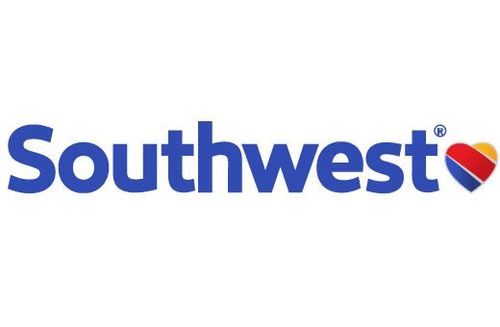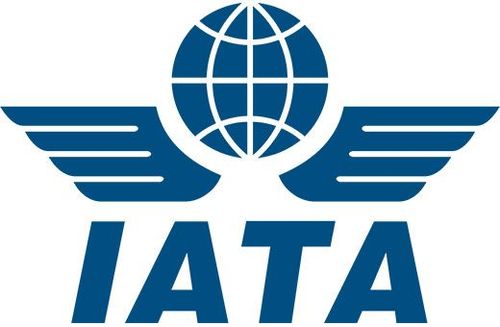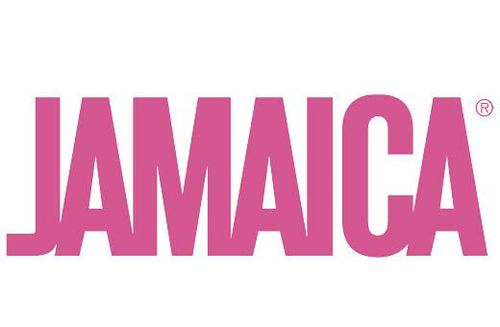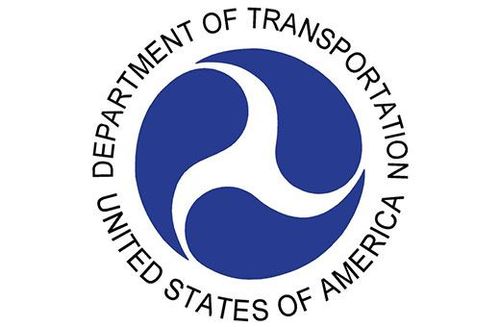Where travel agents earn, learn and save!
News / Southwest reports first quarter 2021 results
Southwest reports first quarter net income of $116 million
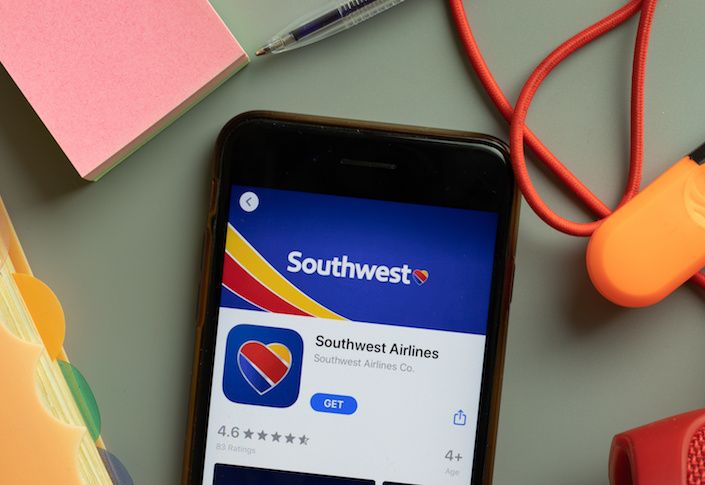
=April 23 - Southwest Airlines Co. reported its first quarter 2021 financial results:
• First quarter net income of $116 million, or $.19 per diluted share, driven by a $1.2 billion
offset of salaries, wages, and benefits expenses from the extended Payroll Support Program
(PSP Extension) proceeds under the Consolidated Appropriations Act, 2021
• Excluding special items1, first quarter net loss of $1.0 billion, or $1.72 loss per diluted share
• First quarter operating revenues of $2.1 billion, down 51.5 percent year-over-year
• Ended first quarter with liquidity2 of $15.3 billion, well in excess of debt outstanding of
$10.8 billion
Revenue Results and Outlook
The Company's first quarter 2021 operating revenues decreased 51.5 percent, year-over-year, to $2.1 billion, as a result of negative impacts to passenger demand and bookings due to the pandemic. First quarter 2021 operating revenue per ASM (RASM, or unit revenues) was 8.86 cents, a decrease of 26.0 percent, primarily driven by a passenger revenue yield decrease of 28.4 percent and a load factor decline of 3.4 points, all year-over-year.
The Company began first quarter 2021 experiencing stalled demand and bookings in January, driven by a high level of COVID-19 cases, coupled with typical seasonal weakness. In mid-February 2021, the Company began experiencing a modest improvement in leisure passenger demand and bookings that accelerated in March 2021. Passenger fares improved throughout March as close-in leisure demand held steady. Beach and other nature-inspired destinations continued to outperform other regions in first quarter 2021. Beginning in March 2021, demand improvement was system-wide.
The following table presents selected revenue and load factor results for first quarter 2021:

(a) No previous estimation provided.
Thus far, the Company continues to experience improvements in leisure passenger demand and bookings for April and May 2021 travel, with expectations of improving passenger traffic and fares compared with March 2021. The Company continues to experience an increase in bookings farther out on the booking curve, with approximately 35 percent and 20 percent of anticipated bookings currently in place for June and July, respectively. These represent fairly typical future booking patterns; however, business travel continues to significantly lag leisure and is expected to have a significant negative impact on close-in demand and average passenger fares.
The following monthly table presents selected preliminary estimates of revenue and load factor for April and May 2021:

(a) The Company believes that operating revenues compared with 2019 is a more relevant measure of performance than a year-over-year comparison due to the significant impacts in 2020 due to the pandemic.
(b) No previous estimation provided.
The Company achieved its goal of accepting corporate travel bookings in 2020 with Amadeus’s GDS platform and Travelport’s multiple GDS platforms: Apollo, Worldspan, and Galileo. In December 2020, the Company reached a full-participation GDS agreement with Sabre, anticipated to go live by Labor Day 2021. The Company also has an agreement with Airlines Reporting Corporation (ARC) to implement industry-standard processes to handle the settlement of tickets booked through Travelport and Amadeus channels. Once the new Sabre GDS connectivity is implemented, Sabre tickets are also expected to settle via ARC. The Company’s enhancement of its GDS channel strategy complements its expansion of direct connect via Airline Tariff Publishing Company’s (ATPCO) New Distribution Capability (NDC) Exchange and existing SWABIZ® options, with the goal of distributing its everyday low fares to more corporate travelers through their preferred channel.
Cost Performance and Outlook
First quarter 2021 total operating expenses decreased 57.3 percent, year-over-year, to $1.9 billion. Excluding special items, first quarter 2021 operating expenses decreased 23.5 percent, year-over-year, to $3.3 billion. Total operating expenses per ASM (CASM, or unit costs) decreased 34.9 percent, compared with first quarter 2020. Excluding special items, first quarter 2021 CASM increased 16.7 percent, year-over-year.
The following table presents economic fuel costs per gallon1, including the impact of fuel hedging premium expense and fuel derivative contracts, for first quarter 2021 and the prior year period:

The Company continued to operate fewer of its oldest, least fuel-efficient Boeing 737-700 aircraft as a result of capacity reductions due to the pandemic, which resulted in a year-over-year improvement of 4.7 percent in ASMs per gallon (fuel efficiency) in first quarter 2021. While the Company expects to return more of its 737-700 aircraft to service to support planned capacity increases, second quarter 2021 fuel efficiency is currently estimated to be sequentially in line with first quarter 2021, on a nominal basis, also taking into account the return of its most fuel-efficient aircraft, the MAX, to service in March 2021.
Based on the Company’s existing fuel derivative contracts and market prices as of April 15, 2021, the following table presents estimates of economic fuel costs per gallon6, including the estimated impact of fuel hedging premium expense and fuel derivative contracts, for second quarter and annual 2021 and prior year periods:

(a) Due to continued uncertainty regarding available seat mile plans for annual 2021, the Company cannot reasonably provide an estimate for its full year 2021 fuel hedging premium expense per gallon.
As of April 15, 2021, the fair market value of the Company’s fuel derivative contracts for the remainder of 2021 was an asset of approximately $44 million, and the fair market value of the fuel hedge portfolio settling in 2022 and beyond was an asset of approximately $267 million. Additional information regarding the Company’s fuel derivative contracts is included in the accompanying tables.
Excluding fuel and oil expense, first quarter 2021 operating expenses decreased 60.2 percent, compared with first quarter 2020. The Company accrued $24 million of profitsharing expense in first quarter 2021, compared with no profitsharing accrual in first quarter 2020. The Company’s first quarter 2021 net income included special items, the largest of which was a net benefit of approximately $1.4 billion. This pre-tax benefit was comprised of approximately $1.2 billion in PSP Extension proceeds; $116 million related to the Employee Retention Tax Credit under the Coronavirus Aid, Relief, and Economic Security Act; and $115 million due to the reversal of a portion of the Company’s previous accrual related to the costs for Employees who accepted the Company’s offer to participate in its voluntary extended leave program. Due to increasing passenger demand and bookings, the Company plans to increase flight activity in summer 2021—by approximately 25 points of capacity from March to June 2021, compared with respective 2019 levels—which has prompted the early recall of a portion of the Employees who elected this program. The Company now estimates annual 2021 cost savings from voluntary separation and extended leave programs to be in the range of $1.1 billion to $1.2 billion compared with annual 2019, as compared with its previous estimation of approximately $1.2 billion.
Excluding fuel and oil expense, special items, and profitsharing, first quarter 2021 operating expenses decreased 19.1 percent, compared with first quarter 2020, which represented the favorable end of the Company’s guidance range. The significant year-over-year decrease primarily was driven by the decline in variable, flight-driven expenses, such as salaries, wages, and benefits; maintenance expense; and landing fees; combined with the Company’s continued focus on cost management. As expected, the Company realized approximately $412 million of cost savings in first quarter 2021 from voluntary separation and extended leave programs. On a unit basis, first quarter 2021 operating expenses, excluding fuel and oil expense, special items, and profitsharing expense, increased 23.4 percent, year-over-year, primarily driven by the significant reduction in capacity.
Excluding fuel and oil expense, special items, and profitsharing, second quarter 2021 operating expenses are expected to increase in the range of 10 to 15 percent, year-over-year3, which includes an estimated $325 million of salaries, wages, and benefits cost savings from voluntary separation and extended leave programs. Second quarter 2021 operating expenses, excluding fuel and oil expense, special items, and profitsharing, are also expected to increase compared with first quarter 2021, with 60 to 70 percent of the sequential increase attributable to variable, flight-driven expenses as capacity is expected to increase to near-2019 levels by June 2021. These variable, flight-driven cost increases are primarily in salaries, wages, and benefits due to staffing increases; maintenance expense to return aircraft to revenue service, along with higher flight-driven maintenance expenses as flight levels increase; landing fees; and personnel, passenger, and revenue-related costs. In addition, the Company is experiencing cost increases primarily due to airport cost inflation; higher aircraft ownership costs due to MAX deliveries; and certain favorable tax and insurance settlements realized in first quarter 2021 operating expenses that are non-recurring in second quarter 2021. Despite increasing capacity and operating expenses, both sequentially and year-over-year, second quarter 2021 operating expenses are estimated to remain below second quarter 2019 levels.
Other expenses in first quarter 2021 increased by $19 million, year-over-year, primarily due to an increase in interest expense driven by new debt issued during 2020, and lower interest income as a result of lower interest rates.
The Company’s first quarter 2021 effective tax rate was 21 percent, and the Company currently estimates its annual 2021 effective tax rate to be approximately 23 percent.
Liquidity and Capital Deployment
As of March 31, 2021, the Company had approximately $14.3 billion in cash and short-term investments, and a fully available revolving secured credit facility of $1.0 billion. The Company currently has unencumbered assets with an estimated value of more than $11 billion, including aircraft value estimated in the range of $9 billion to $10 billion, and approximately $2 billion in non-aircraft assets such as spare engines, ground equipment, and real estate. In addition to the value from aircraft and other physical assets, the Company has significant value from its Rapid Rewards® loyalty program. As of April 21, 2021, the Company's cash and short-term investments remained at approximately $14.3 billion.
Net cash provided by operations during first quarter 2021 was $645 million, primarily driven by PSP Extension proceeds. First quarter 2021 capital expenditures were $95 million. The Company estimates its 2021 capital expenditures to be approximately $500 million, primarily driven by technology, facilities, and operational investments. Based on the Company’s recently completed aircraft purchase agreement with Boeing, the Company estimates its total contractual aircraft capital expenditures for all years 2021 through 2026, which are associated with 169 MAX firm orders (135 MAX 7 and 34 MAX 8 aircraft), to be approximately $5.1 billion. The Company currently estimates approximately $700 million of aircraft capital expenditures in 2022, based on firm orders. The Company has not finalized its 2022 fleet or capital investment plans.
During first quarter 2021, the Company reached an agreement with the U.S. Department of Treasury (Treasury) and received approximately $1.7 billion in PSP Extension proceeds under the Consolidated Appropriations Act, 2021. The Company soon expects to receive approximately $259 million as its final distribution pursuant to the PSP Extension, for a total of approximately $2.0 billion of proceeds under this program. In addition, the Company soon expects to reach agreement with Treasury to receive approximately $1.9 billion in payroll support proceeds under the American Rescue Plan Act of 2021 (PSP 3) in return for providing consideration to Treasury in the form of a promissory note and warrants. The Company intends to disclose additional details regarding PSP 3 after the agreement with Treasury is finalized.
As of March 31, 2021, the Company had current and non-current debt obligations that totaled $10.8 billion. The Company repaid approximately $67 million in debt and finance lease obligations during first quarter 2021 and is scheduled to repay approximately $153 million more in debt and finance lease obligations in 2021. Based on current debt outstanding and current market interest rates, the Company expects second quarter 2021 interest expense to be approximately $115 million. As of March 31, 2021, the Company was in a net cash position7 of $3.6 billion, and its adjusted debt8 to invested capital (leverage) was 57 percent.
Fleet and Capacity
The Company ended first quarter 2021 with 730 aircraft in its fleet, including 61 MAX 8 aircraft. During first quarter 2021, the Company took delivery of 20 MAX 8 aircraft, comprised of 12 owned and 8 leased aircraft. The Company expects delivery of eight more MAX 8 aircraft in 2021. Also during first quarter 2021, the Company returned eight leased 737-700 aircraft to lessors and expects to retire up to nine more 737-700 aircraft in 2021. In response to capacity reductions due to the effects of the pandemic, 59 737-700 aircraft were in temporary storage as of March 31, 2021. In April, the Company also removed 32 of its MAX 8 aircraft from service due to a Boeing production issue related to the electrical power system on a subset of MAX aircraft. Upon learning of the issue, the Company immediately removed these aircraft from service, out of an abundance of caution, and is currently awaiting more guidance from Boeing and the FAA regarding the appropriate corrective actions. The Company is in the process of returning its stored 737-700 aircraft to revenue service to support flight schedules in summer 2021 and beyond.
The Company’s order book with Boeing includes a total of 349 MAX firm orders (200 MAX 7 and 149 MAX 8) and 270 MAX options (MAX 7 or MAX 8) for years 2021 through 2031. Additional information regarding the Company’s aircraft delivery schedule is included in the accompanying tables.
The Company’s first quarter 2021 capacity decreased 34.5 percent, year-over-year, in line with the Company’s guidance, due to capacity reductions in light of the decrease in passenger demand and bookings as a result of the pandemic. The following table presents capacity results for first quarter 2021:

The Company estimates its second quarter 2021 capacity to increase approximately 90 percent, year-over-year, and decrease approximately 15 percent as compared with 2019, driven by improving passenger demand and bookings. The following table presents capacity estimates for second quarter 2021:

(a) Remains unchanged from the previously provided estimation.
(b) No previous estimation provided.
Passenger demand and booking trends remain primarily leisure-oriented and inconsistent by region. Despite recent improvements in leisure demand, the Company remains cautious in this uncertain environment and continues to plan for multiple fleet and capacity scenarios. The Company will continue to monitor demand and booking trends and adjust capacity, as needed. As such, the Company’s actual flown capacity may differ materially from currently published flight schedules or current estimations.
Awards and Recognitions
• Named the #1 U.S. airline in the Wall Street Journal's annual ranking for 2020 • Named to FORTUNE's list of World's Most Admired Companies; ranked #14 • • #1 Marketing Carrier in Customer Satisfaction per the U.S. Department of Transportation (DOT)5 • Named the top domestic airline for customer service by the 2021 Elliot Readers' Choice Customer Service Awards • Named Domestic Carrier of the Year by the Airforwarders Association for the 12th consecutive year • Named to Glassdoor's Best Places to Work list for the 12th consecutive year • Designated a 2021 Military Friendly Company by Viqtory • Named one of the 25 Best Companies for Latinos to Work by Latino Leaders Magazine • Named as A Best Place To Work For LGBTQ Equality from the Human Rights Campaign Foundation
More Travel News:
Trans-Tasman bubble has Aussies hopping across the ditch
ACI World data reveals COVID-19’s impact on world’s busiest airports
Buy Now, Pay Later: Leader Uplift announces new partnership with Southwest Airlines
UNWTO and IATA collaborate on Destination Tracker to restore confidence in travel



